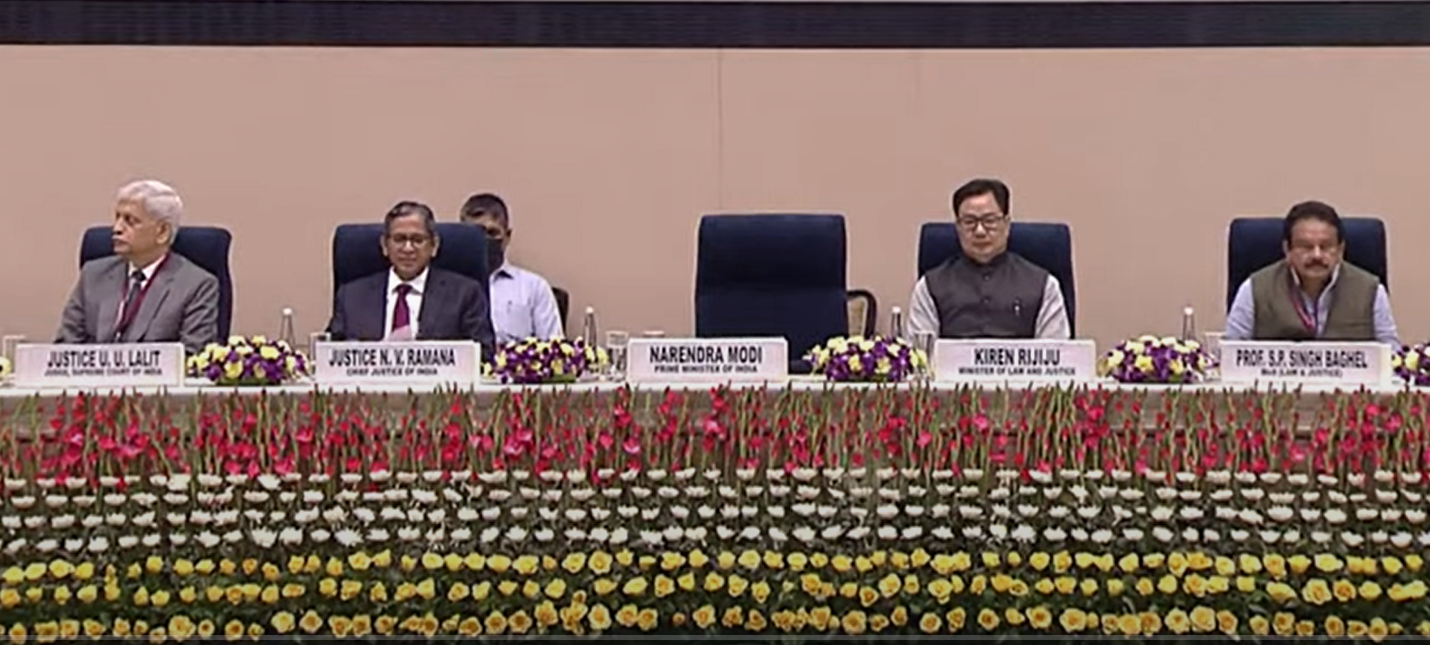 Dispatches
DispatchesFrom New Delhi, India Chief Correspondent Neelabh Bist reports for JURIST on recent top-level meetings of India’s senior judges and political leaders in which needed improvements to Indian court structure and process were discussed…
Last week a conference of Chief Justices of different Indian High Courts and a joint conference of the Chief Justices of High Courts and the Chief Ministers of India’s states was held in New Delhi, both after a gap of six years. The recommendations and conclusions reached at the Conference of Chief Justices were taken up at the Joint Conference on Friday.
At the Conference of the Chief Justices of High Courts, various important issues, including strengthening of judicial IT infrastructure, district court personnel requirements, infrastructure and capacity building, institutional reforms, and appointments of high court judges were on the agenda. The Chief Justice of India, Justice N. V. Ramana, urged the High Courts to forward names for elevation in case of vacancies, and appreciated their efforts in cooperating for the same since his elevation, which has led to 126 appointments in less than a year.
However, there is a long way to go, as there remain 5000 vacancies at the trial court level, while the Indian high courts are functioning at only 50% capacity, as highlighted by the Attorney General of India, Mr. KK Venugopal, at the the Supreme Court Bar Association reception in honor of the Chief Justices. Chief Justice Ramana further highlighted that these vacancies are in turn responsible for the extremely high volume of pending cases at all levels of the judiciary – 40 million before the trial courts, and 5.8 million before high courts. As a way to ensure that there is an adequate pool to choose from to fill the judicial vacancies, Supreme Court Bar Association President Vikas Singh urged the High Courts to consider Supreme Court lawyers for elevation, who, while they may not be practicing in the said High Courts, are nonetheless meritorious.
At the Joint Conference, various pertinent issues were discussed by the dignitaries present. During his inaugural address, the Prime Minister, Mr. Narendra Modi. focused on issues of language and accessibility. He emphasized the need to promote local languages in courts, with the help of which the common man can become a part of the process of justice, and without which he was excluded as there was no understanding of the system due to language barrier. He further suggested that like various other countries, there was a need in India to pass simplified versions of statutes along with the original version, so that the common man could understand the laws applicable to him. In fact, in pursuance of the same, a Central Government Committee has already been formed. He also highlighted the plight of undertrials (persons held pending trial) in the country, most of whom were from poor families, and urged all Chief Justices to address thir cases on priority, with the help of existing committees headed by District Judges.
Addressing the Joint Conference of Chief Ministers and Chief Justices of High Courts. https://t.co/P1jsj2N1td
— Narendra Modi (@narendramodi) April 30, 2022
The Union Law Minister, Mr. Kiren Rijuju, requested the state governments to ensure security and safety of judges and court complexes, which is a prerequisite for judges to perform their constitutional duties without fear. The Chief Justice of India further clarified that the Chief Ministers of various states had assured him that the necessary court security infrastructure would be put in place. Particularly, the double security system applicable to Jammu and Kashmir High Courts would be implemented in district courts as well.
Further, appreciating the importance of collaborative efforts of the judiciary and the executive in order to ensure an effective justice delivery system, the Chief Justice of India lamented the executive’s role in adding to the already burgeoning caseload of the judiciary. He attributed the causes to be non-performance of various wings of the executive, ambiguous laws, many of which were passed without sufficient debates and discussions, and the government’s non-compliance with judicial decisions.
The Conferences were successful in shedding light on myriad impediments in the judicial system, as aforementioned. However, as always, the recommendations and resolutions adopted must be proactively applied on the field for any real impact to be felt in the system.

